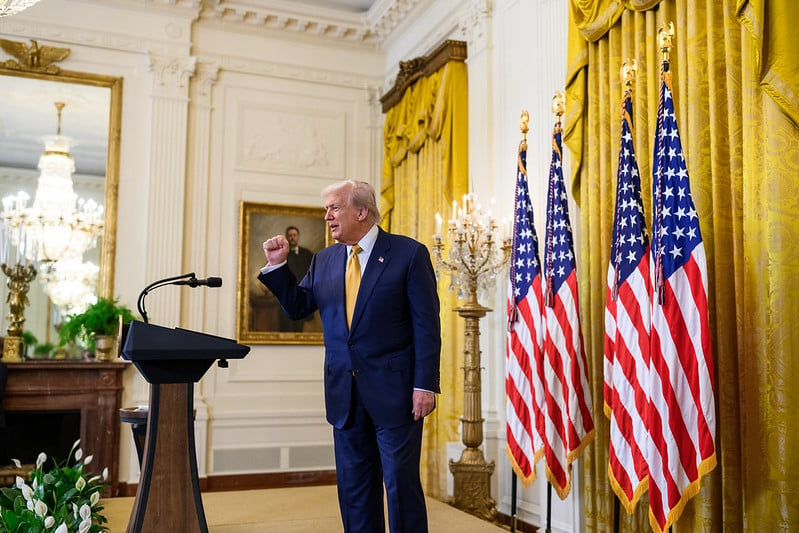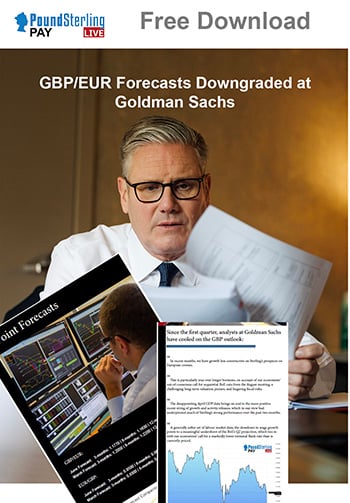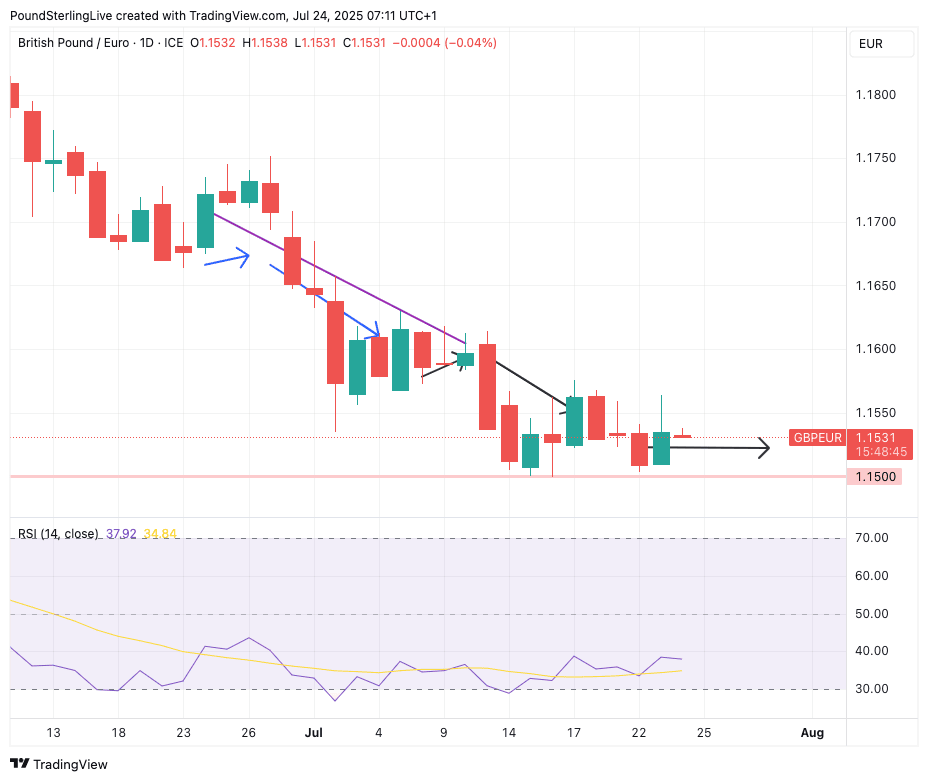
Official White House Photo by Joyce N. Boghosian
Pound Sterling firms on global trade deal optimism, but PMIs disappoint.
The Pound to Euro exchange rate (GBP/EUR) rose as high as 1.1560 midweek on signs that the EU and U.S. were closer to agreeing a new trade accord.
However, the advance was pared to 1.1518 in mid-morning London trade after new survey data from the Eurozone and UK showed divergent economic momentum.
The UK's Composite PMI, a closely watched measure of private sector activity, slowed to 51 in July, disappointing expectations for a more robust reading of 51.9.
At the same time, the Eurozone's equivalent reading improved to an 11-month high at 51, which exceeded estimates for 50.8.
That both read at 51 suggests a parity, but it is the surprise element that matters for markets; that the EU surprised positively and the UK negatively would typically mean EUR would gain over GBP. Following the release, we note a small, but discernible drop in GBP/EUR.
Despite the data disappointment for Sterling, downside in GBP/EUR should be limited by the bigger picture trends that are proving supportive: reports suggest that the U.S. is to set a 15% tariff for most imports.
The news means that the EU would likely see the same parameters as those accepted by Japan late on Tuesday, and means the final tariff will be half of the 30% Trump recently threatened.
This brings further clarity on the global trade outlook, which has boosted the investor mood and helped stock indices in Europe, Asia and the U.S. to new highs.
Pound Sterling traditionally tends to appreciate in value against the Euro under such a scenario. Also, the Euro is underperforming more broadly as it gives away a portion of the gains it secured during months of trade uncertainty.
The 2025 playbook has shown that the Euro tends to benefit when trade uncertainty is high, as investors seek out U.S. alternatives. "Policy uncertainty, widening deficits and regulatory shifts weaken dollar support; against this, the euro's stable institutions and valuations offer balance," says Gérald Moser, CIO & Head Investment Services Europe at LGT Private Bank.
IIt stands that fading uncertainty will weigh, as is currently the case.
U.S. Treasury Secretary Bessent said on Wednesday “we are making good progress with the EU.” Trump then said the US is in "serious negotiations" with the EU and that “we will let them pay a lower tariff” if the EU opens up to American businesses.
Bloomberg has meanwhile quoted diplomats who confirm 15% is the landing zone, although some industries such as steel and aluminium were not going to avoid higher U.S. sectoral tariffs.
For insurance reasons, the EU said it is also preparing countermeasures, including a package of tariffs on more than €90BN worth of American goods, if a deal isn't reached by the Aug. 1 deadline.
"If a 15% total rate inclusive of existing tariffs is agreed as suggested, this would mark only a marginal increase compared to the 10% additional tariffs that EU exports to the US have faced since Liberation Day but with certainty about the future," says Jim Reid, a macroeconomic strategist at Deutsche Bank.
Trump also suggested that the lower limit of the final tariff agreements would be 15%, contradicting earlier indications (from Commerce Secretary Lutnick and Trump himself) that a flat 10% would apply to many smaller Latin American, Caribbean and African countries. The comments imply an overall higher global tariff rate.
"We'll have a straight, simple tariff of anywhere between 15% and 50%," Trump said. "We have 50% because we haven't been getting along with those countries too well."
The finer details are yet to be made clear, but what is clear is that all the major trading partners are close to reaching deals, which should lift a cloud of uncertainty and open the door to further equity market gains.
This can underpin the Pound's performance against the Euro, something we have been anticipating.
Above is our latest Week Ahead Forecast chart, released Monday. It shows we have been right in expecting declines for the past month. Our latest annotation is the sideways pointing black line that shows we look for sideways consolidation above 1.15 in the near term.
So far, so good.
PMIs Diverge, ECB Ahead
Looking ahead, the European Central Bank (ECB) rate announcement at 12:15 pm GMT is the final major calendar event of the week for the Euro. Here, the central bank is expected to keep interest rates unchanged.
The guidance will be important, and the ECB won't want to rock the boat too much. This means they will allow the market to hold onto expectations for one further rate cut in the cycle, likely in September.
The ECB is about to end its cutting cycle ahead of the likes of the Bank of England and Federal Reserve, which should bestow some ongoing support for the Euro against Pound Sterling and the Dollar via the interest rate channel.


